Once upon a glorious time, I had a tiny B&B, HotelForTwo, on Mull, a Western Isle off the top left-hand side of Scotland. Dinners were cooked from vegetables grown in the garden, meat came from sheep grazing on hillsides above the glens, cheeses were made locally. In spring, I foraged for wild garlic, to make a pesto to go with the fish caught on lines off local boats.
Down around the lighthouse, approached through a hazel grove swarming in high summer with midges (No See ’ems), fields of seaweed waved in the clear waters of the Sound of Mull. I would go down with a knife and harvest kelp, sea lettuce and dulse to turn into salads or chutney, cutting gently in order not to deplete supplies.
Not that depletion was likely - kelp can grow five metres a day, and in this group of brown seaweeds there are over 30 different types. 6 percent of global seaweeds - 600 varieties - grow in the UK, including 7 of Europe’s 14 kelp species. In the autumn, I’d drive down to a beach where the force of early winter waves piled seaweed up in tangles along the shoreline and fill my car with sacks of it to spread across the flower and vegetable beds.
Seaweed is one of nature’s most remarkable treasures. It’s loaded with multiple vitamins, sixty trace elements, minerals, iodine, sodium, amino acids and calcium. It contains protein, fibre, chlorophyll, volatile oil, and elements that sound like foreign menu items, such as fucoidan, mannitol, laminarin, and cancer-preventing lignans.
Eating seaweed, sometimes fresh, sometimes dried and sometimes included in breads and baked goods, is a tradition wherever it grows in clean waters. The Welsh have been making laverbread with it since at least the 17th century. This is not actually a bread but a paste, made by long-boiling laver seaweed and turning it into a purée. It’s commonly sold in a disc that is sometimes rolled in oatmeal, to be sliced and fried to eat with bacon and cockles as a traditional breakfast, or on hot buttered toast with shellfish.
The Japanese have been eating seaweed probably longer than anyone. According to a 1200 year-old text, it was given as a gift to the Imperial court. Kombu, nori, hijiki and wakame are among today’s foods offered to the gods as part of Shinto religious practices. In Japanese kitchens, these seaweeds are an integral part of the cuisine, used whole, sliced or crumbled, fresh, dried or pickled. Of them, nori is the most well-known outside Japan, wrapping sushi and onigiri, added to miso and other soups, or sprinkled over noodles and rice bowls. Dried nori mixed with sesame seeds, chilli, sugar and salt makes a common table seasoning.
Wakame is the seaweed used in seaweed salads and side dishes, bought fresh but more commonly available dried, to be rehydrated for cooking.
Kombu, known to us as kelp, is one of the most versatile varieties of seaweed used in Japanese cooking. Mostly harvested in Hokkaido, it is similar to wakame in that it is usually sold dried and later rehydrated. It’s the base for dashi, that collective noun for Japanese stocks created by heating kombu in water with shavings of preserved fermented skipjack tuna or bonito. Dashi provides ‘umami’ to miso soup and ramen dishes. Kombu is also used in tea, and caramelised in soy sauce, sugar and sake for an accompaniment to rice and onigiri.
Hijiki is a brown seaweed harvested along the rocky coastlines of Japan, Korea and China. However, most types of seaweed sold commercially fresh or dried comes from Ise-Shima, an ultra-clean bay in Japan.
But if you’re looking to forage for seaweed, other edibles among the brown varieties are Toothed Wrack (above), popular as a snack in Scotland, and Dabberlocks, cooked by communities up and down the North Atlantic coast.
Sea spaghetti or Thongweed (above), one of the longest seaweeds growing to more than 2 metres, is fried on high heat until crispy to serve with fish, or boiled to use like spaghetti with a sauce.
Seaweed farming has taken off recently in the waters of the Pacific Northwest, Alaska and New England, with dulse, bull kelp, ribbon- and sugar-kelp all being grown.
It’s perfect food for vegetarians, thoroughly nutritious. Dulse when fried is considered a plausible replacement for bacon, apparently the food some new vegetarians miss most. If you are vegetarian yet feel repelled by the thought of eating that slimy stuff that can wrap itself round your ankles when swimming, you are probably already eating it without knowing it, in salsa, seasonings, and other food products. Carrageenan, extracted from red seaweed, is a common food additive, often used a thickener in custard, ice cream, sauces, and dips. Agar agar, the vegetarian replacement for the thickener gelatine, is a seaweed.
I used to make this Japanese seaweed salad from my seaweed harvest at the Mull lighthouse.
Obviously, foraging for seaweed should only take place where the sea is guaranteed clean - away from land-based polluting sources, a serious challenge in English waters these scandalous times - so not near estuaries and tidal rivers. Far from a fresh source, Wakame, as the salad is known after the seaweed it employs, is commonly made from rehydrated dried seaweed, readily available in Japanese or Asian supermarkets. However, it can also be made from finely slicing a Savoy Cabbage, blanching it then making sure it is scrupulously squeezed and paper towel-patted dry. No Japanese would call it genuine but they might agree it’s delicious. The Crispy Fried Seaweed common on Chinese menus as a starter is usually made from Savoy Cabbage in the west, not seaweed.
Serves 2 as a side dish with fish or part of 2 or 3 starters
50g/1.7 oz dried Wakame seaweed
3 tablespoons soy sauce
1 tablespoon mirin (sweet Japanese rice wine)
1 tablespoon white toasted sesame seeds
1 tablespoon sesame oil
1 tablespoon rice vinegar
¼ teaspoon red pepper flakes (optional)
1 teaspoon black sesame seeds (optional)
Put the seaweed in a medium bowl and cover with warm water. Let it steep for 10 minutes till rehydrated. Squeeze out the water thoroughly and set the seaweed in a serving bowl.
Whisk all the remaining ingredients except for the black sesame seeds together. Pour over the seaweed and toss well to coat, sprinkle over the black sesame seeds, then refrigerate 30-60 minutes for the flavour to develop.




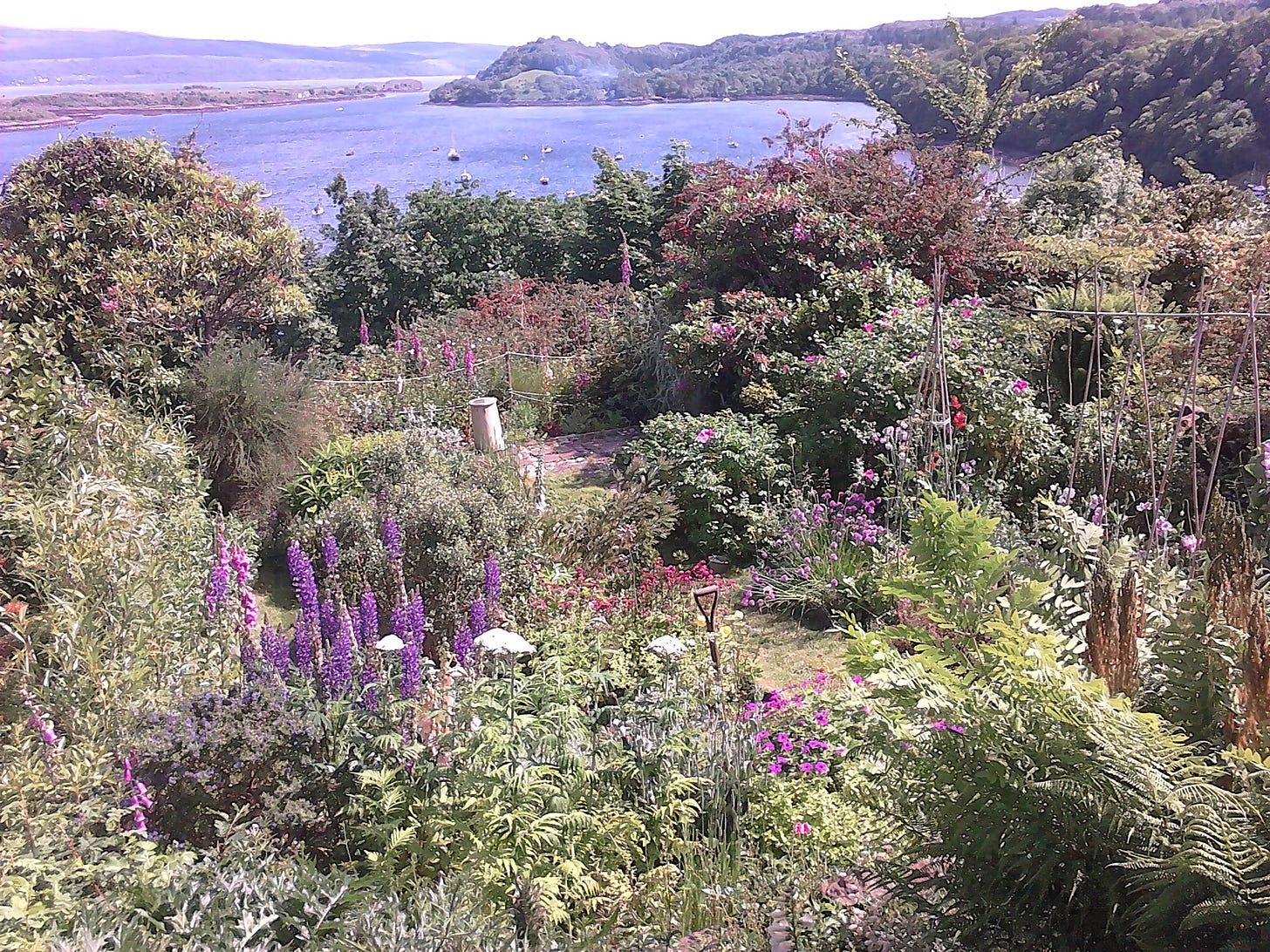

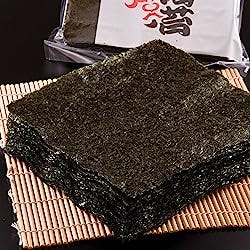
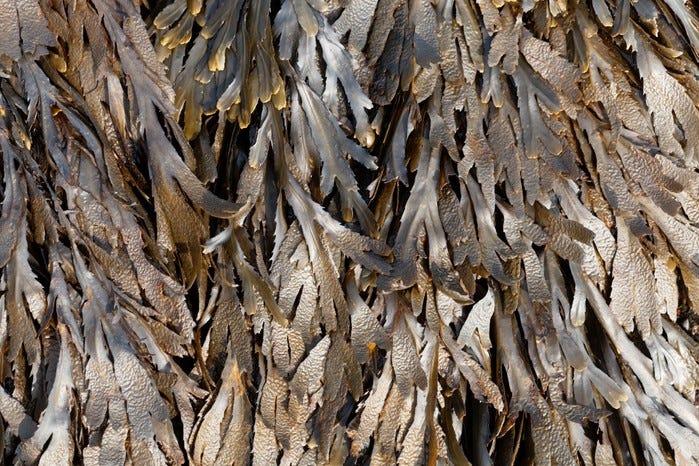
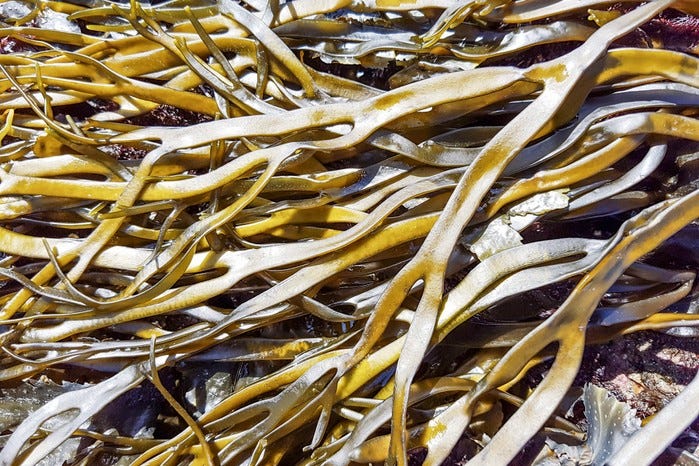
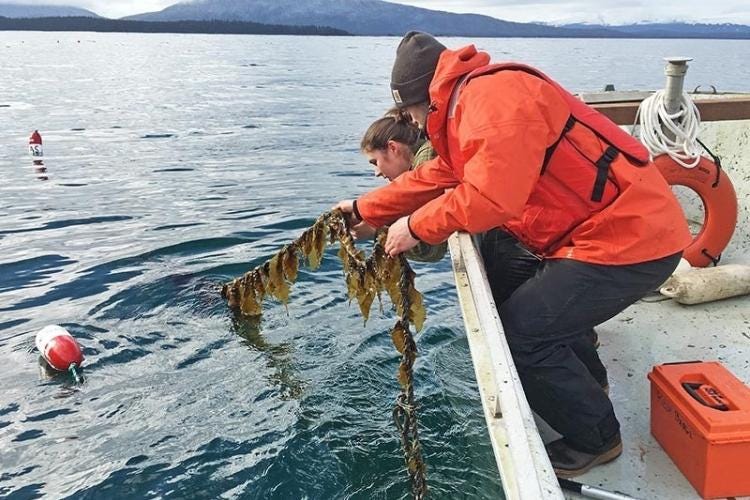

Very good to learn more about seaweed which I rarely eat. And such lovely photos of Mull.
I have a seaweed chutney from Mull that makes an excellent swap for tomato sauce on a plain cheese pizza!
I *adore* seaweed! Earlier this year I finally tried umibodo, a type of seaweed from Okinawa that looks a lot like caviar. It's very hard to get outside Okinawa itself, so when I saw it on the menu at a place in Tokyo I had to try it. It was FANTASTIC and now that I'm hooked I don't know how to feed my addiction.